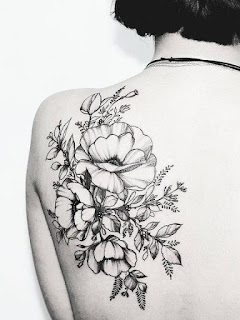Tiamat, who was born in 1961 as Richard Hernandez at that time and living as a man and working as a vice president for one of America's leading banks, but a HIV diagnosis changed her life, she was determined 'not to die a human' and spent the last 20 years undergoing extensive modification to appear more like a dragon. The now 56-year-old began her transformation with a series of scale tattoos all costing an estimated $60,000 (£42,000).
 |
| 'Dragon lady': Eva Tiamat Medusa, has spent more than $60,000 (£42,000) on her extreme transformation |
Achieving the appearance of a rattlesnake has included subdermal implants, which were made to appear as horns; removal of ears; reshaping and removal of nose cartilage and septum; dying the whites of the eyes; full body tattoos; and dome implants along the eyebrows. On Facebook, Tiamat credits most of the work to Emilio Gonzalez, a body modification artist who has been associated with various tattoo studios and modification procedures.
 |
| Tiamat has had her nose re-shaped, teeth removed, her tongue bifurcated for a fork effect - and even had the whites of her eyes stained |
In Facebook posting, Tiamat has mentioned dealing with pain from the horn-like implants. Schulman surmised that if the implants occurred in tattoo parlors, or some other non-medical facility, the artist likely did not have certification or licensing to obtain or prescribe any anesthetics or painkillers.
“Body parts are removed because of trauma and cancer, and there’s a whole field of reconstructive plastic surgery to rebuild these structures and restore normal function— the removal idea is something that no plastic surgeon is going to do,” Schulman said. “The danger with that is people are going to do what they want to do, and it forces them to go down a different route such as having these [procedures] done by non-medical professionals in settings that may not be appropriate.”
 |
| Tiamat, seen while still living as a man in 1998 and before embarking on her extreme makeover |
“In terms of the ears and the tongue and the nose, those require major reconstructive surgery in order to recreate the structure. And even if we’re able to do that, a lot of times it’s more of a cosmetic repair— it’s much more difficult to recreate or restore the function of the structure,” Schulman said, later adding that splitting the tongue could cause complications with speech, chewing food and swallowing.
Tiamat countered that double-standards make it difficult for society to accept its body modifications the same way it does tummy tucks and face lifts.
 |
| Now she becomes the most modified transsexual in the world |
but he said: 'For me, my transformation is the greatest journey of my life.
'There are profound reasons and deep meanings about my transformation and why I'm doing it.
'I hope that my story will help other people - not only those who have gone through hard times, but also people who have lost hope'



















